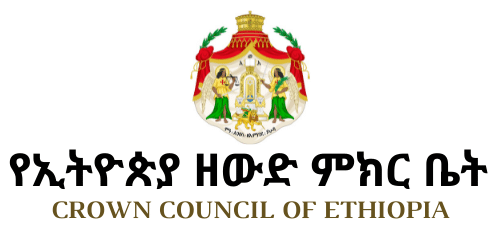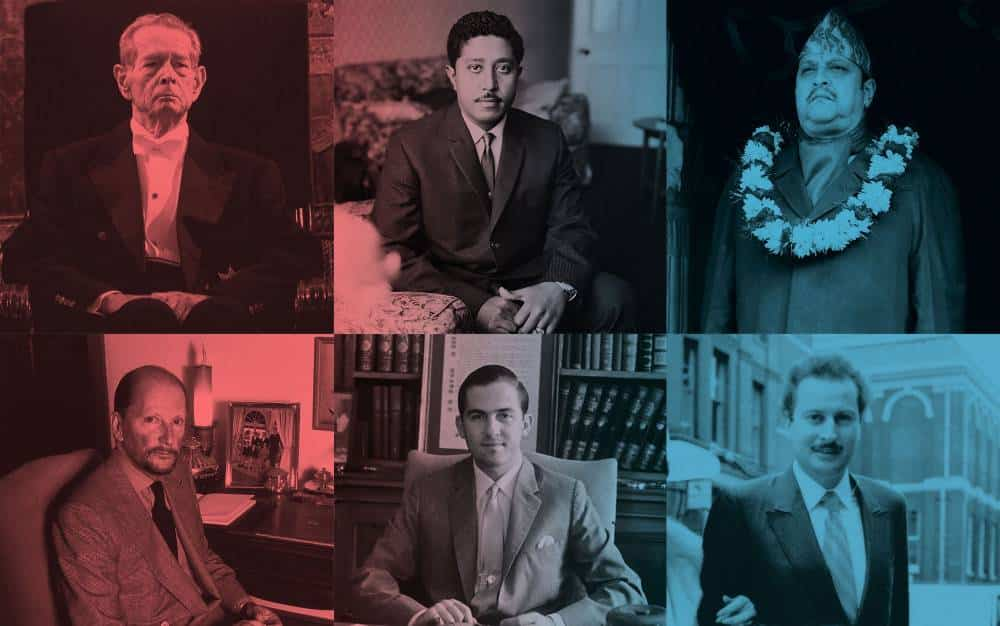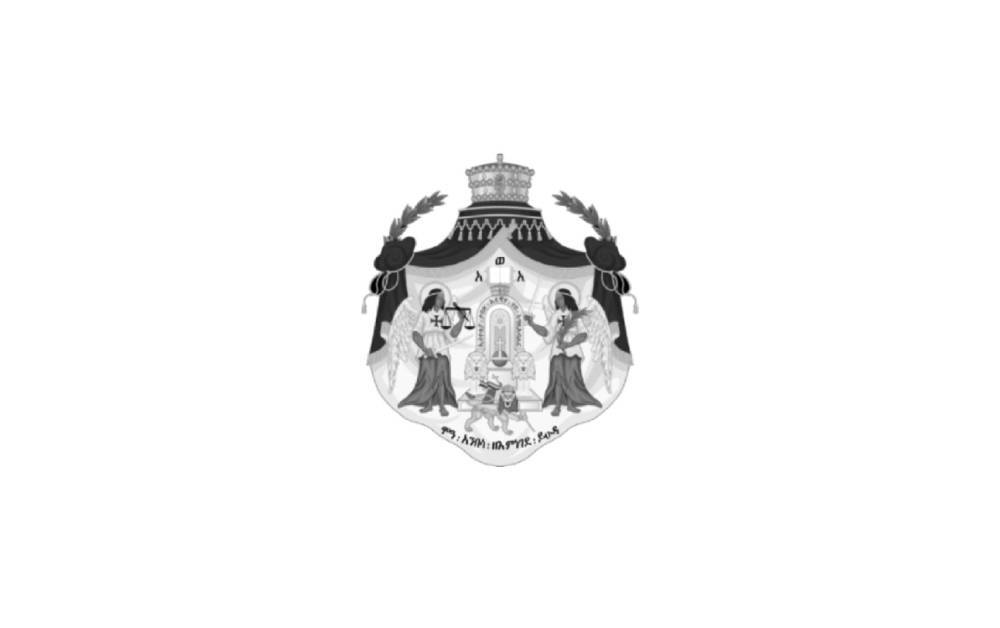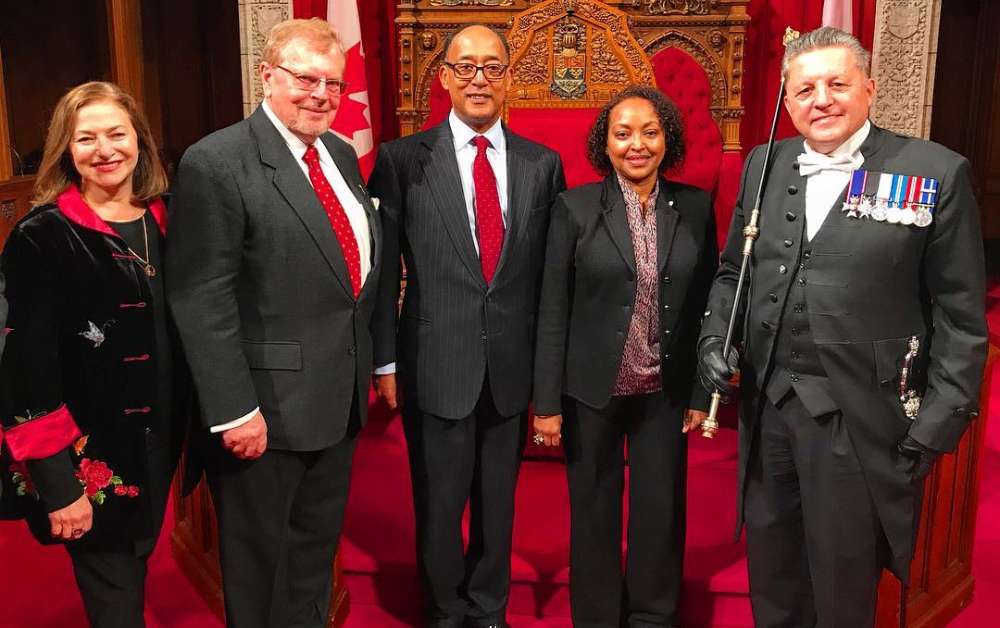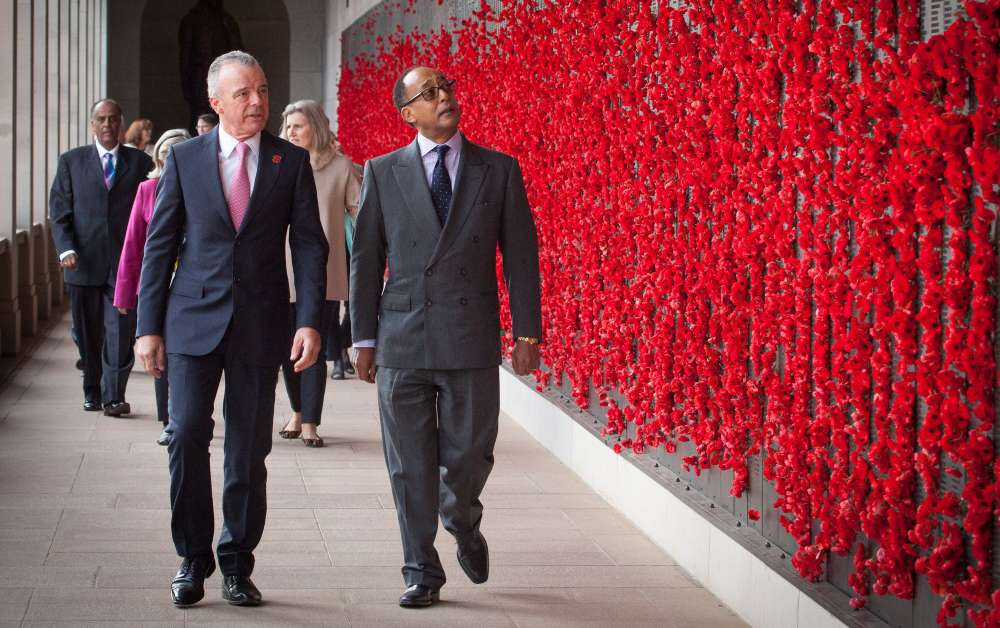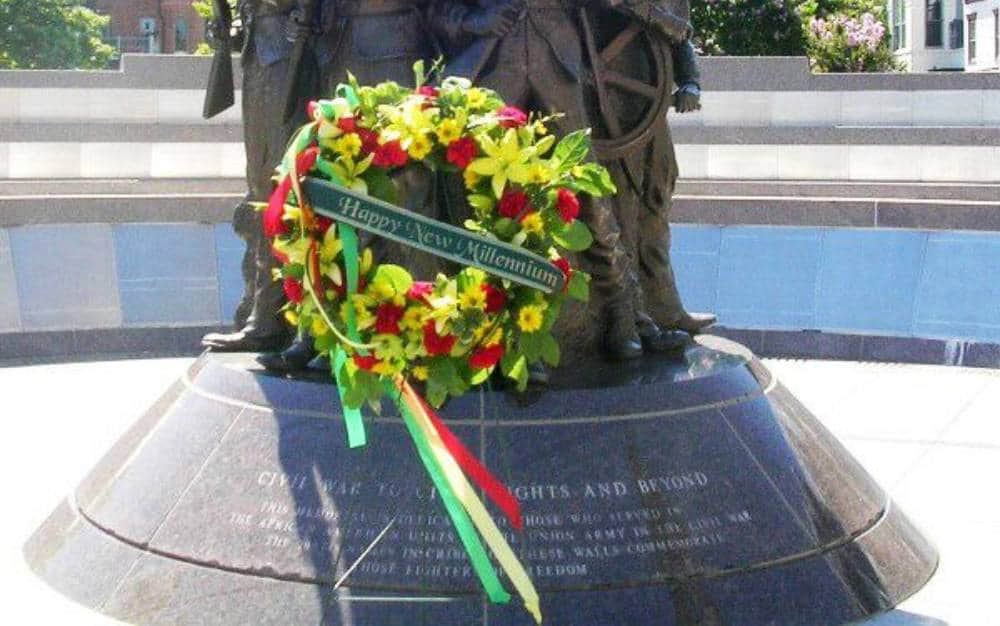Ethiopian Crown Council President His Imperial Highness Prince Ermias Sahle-Selassie Haile-Selassie was the focus of a major report in the national US magazine, Vanity Fair, which appeared on newsstands on May 1, 2018. Full text of the article can be seen on the magazine’s website.
Ethiopian Christmas (Melkam Genna)
A Statement from the Crown Council of Ethiopia by its President, His Imperial Highness Prince Ermias Sahle-Selassie Haile-Selassie
We wish all Ethiopian People, at home and in the Diaspora, a blessed Ethiopian Christmas (Melkam Genna).
There is strength in forgiveness, so may this wondrous holiday season usher in an era of peace and reconciliation amongst all our people, remembering that what we share in our three millennia of collective history — our bond — is greater than anything which could temporarily divide us.
We are all at a crucial crossroads in our great nation. Where there were mistakes and miscalculations we need an earnest reform and corrections. These require of us a courageous commitment of action: Sincere applications and concrete steps to fulfill promises of words. Inevitably, challenges will emerge, but the key is to reflect with patience and magnanimity in seeking tolerant outcomes.
We are all encouraged by the spirit of reconciliation. True reconciliation cannot exist in the absence of justice and it must include an affirmation to correct inequalities, real or perceived. It is a journey as well as a destination.
Let us embark on this path with open hearts and vigilance. We are all stakeholders, and which outcomes we choose will determine our collective destiny. Ethiopians are an ancient and wise people, confident in their faith and humanity. Let us pray that sanity and magnanimity will prevail over hatred and violence.
Let us all embrace challenges as opportunities. Let us all commit ourselves to work for peace not only amongst ourselves with all our neighbors within Ethiopia’s boundaries and within a region peopled by our cousins. We have known each other, and shared with each other, for many millennia. We can, and will, resolve any obstacles, and build a great future together.
May the Almighty continue to guide and bless our People and Country. Let us chart together a peaceful and prosperous Nation, confident in itself and its future.Ethiopian Samson Berhane, 27, reads a previous month’s Ethiopian Business Review, featuring Ethiopian Prime Minister Abiy Ahmed, who won the Nobel Peace Prize, at his office in Addis Ababa, Ethiopia
The Commemorative Visit to Canada, November 15-19, 2017, of His Imperial Highness Prince Ermias Sahle-Selassie Haile-Selassie, President of The Crown Council of Ethiopia
heir Imperial Highnesses Prince Ermias Sahle-Selassie Haile-Selassie and Princess Saba Kebede arrived in Ottawa on November 15, 2017, to start the Crown’s Commemorative Visit to Canada, marking the 50th anniversary of the State Visit of His Imperial Majesty Emperor Haile Selassie I in 1967. The Emperor’s visit coincided with the 100th Anniversary of the Confederation of Canada, and Their Imperial Highnesses’ visit coincided with the 150th anniversary.
These series of Commemorative Visits are designed to support the Ethiopian diaspora, and to help the drive toward unifying Ethiopians, who still suffer from the divisive effects of the coup and subsequent destruction of Ethiopia by the Dergue which seized power in 1974.
The Imperial Couple chose to drive into Canada from Buffalo, New York, so that they could see some of the countryside on their first formal visit to Canada. Their visit saw the start of their formal activities on November 16, 2017, with a visit by His Imperial Highness to the new Headquarters of the Royal Canadian Geographical Society in Ottawa, where the Honorary President of the Society, Alex Trebek, OC, and RCGS Chief Executive Officer John Geiger, GOEM, welcomed him.
Prince Ermias was honored in a ceremony by the RCGS with investiture as an Honorary Fellow of the Society, in which the Lieutenant Governor of Ontario placed the Fellow’s medal around the neck of His Imperial Highness.
The Imperial couple also visited Parliament on November 16, as guests of the Usher of the Black Rod, Mr J. Greg Peters, MVO, who also participated with some 500 other dignitaries, including Fellows of the RCGS, at a dinner at the Museum of History.
The couple departed for Toronto early on November 17, 2017, for meetings with the Ethiopian and African diaspora communities and for a special visit to Dundurn Castle, in Hamilton. They were also be guests at a private reception honoring the work undertaken by the University of Toronto to promote educational, medical, and other areas of cooperation with Ethiopia, and for the University’s teaching of Ethiopian and Ge’ez studies.
They departed Toronto for the US on Sunday, November 19, 2017.
The Commemorative Visit to Australia, June 18-July 1, 2017, of His Imperial Highness Prince Ermias Sahle-Selassie Haile-Selassie, President of The Crown Council of Ethiopia
Sponsored by the International Strategic Studies Association’s Zahedi Center for the Study of Monarchy, Traditional Governance, and Sovereignty
His Imperial Highness Prince Ermias Sahle-Selassie Haile-Selassie, President of the Crown Council of Ethiopia, between June 18 and July 1, 2017, visited Australia to commemorate the State Visit to the country by His Imperial Majesty Emperor Haile Selassie I, in 1968. The visit, organized and supported by the Zahedi Center for the Study of Monarchy, Traditional Governance, and Sovereignty at the International Strategic Studies Assn., in Washington, DC, was described by The Australian Financial Review of June 22, 2017, as taking on all the trappings, itself, of a State visit. It took in formal activities in Sydney, Canberra, Melbourne, and Perth, hosted by government and civic leaders and the Ethiopian diaspora.
HIH Prince Ermias Sahle-Selassie Interviewed by Voice of America
Prince Ermias Sahle-Selassie Receives the Golden Key to Frankfort, Kentucky
The City also passes resolution proclaiming May 7, 2012 as “Prince Ermias Day”
H. Gippy Graham, Mayor of Frankfort, KY presented His Imperial Highness Prince Ermias Sahle-Selassie Haile-Selassie the Honorary Key to the city of Frankfort (capital city of Kentucky) for his strategic leadership, active participation in designing programs to assist African peacekeeping, reconciliation, and border dispute resolution. The Prince was also honored for his active role in African charitable works, cultural activities and historical preservation, as well as keeping the legacy of the institutions of Ethiopia’s ancient monarchy from falling into oblivion.
The event was held during the 13th annual interdisciplinary conference on African Studies hosted by Kentucky State University (KSU). This year, the Conference focused on the theme “How will Africa’s growing Economic development Impact the people and the environment?” The conference brought scholars, KSU students and professionals from various disciplines and institutions to KSU to celebrate African heritage.
During the event, Professor Gashaw Lake, Dean of the College Professional Studies at KSU introduced His Imperial Highness Prince Ermias, the President of the Crown Council of Ethiopia and the representative of the Ethiopian Crown in exile, as a guest speaker to the participants. Prince Ermias, in his speech, introduced his new initiative to bring pure drinking water to the People of Africa while helping to improve their ecological conditions. The project, which is named “The Prince Ermias Shale-Selassie Water Initiative for Africa” (WIA), is a low-cost, new and environmentally positive technology capable of rapidly transforming life for millions of people, not just in response to emergencies, but as a permanent building block for social development. The WIA offers these new technologies for all and works not only on its own projects, but also with all other aid agencies and foundations to achieve Africa’s renaissance.
Professor Lake, who was also one of the coordinators of the annual conference at KSU, praised the Prince’s noble personality as a great man who transformed the Crown Council and his own life into a mission to improve the welfare of Africans wherever they are.
*Prince Ermias was named the recipient of the International Strategic Studies Association (ISSA), and was given the Silver Star Award of Outstanding contributions to strategic Progress through humanitarian achievements because of his work for Ethiopian Refugees in Africa.
(The 13th Annual Interdisciplinary Roundtable Conference on African Studies was held at the Kentucky State University April 7-9, 2012.)
Ethiopian Emperor’s Grandson Honors African Americans
H.I.H. Prince Ermias Sahle-Selassie Haile Selassie, grandson of H.I.M. Emperor Haile Selassie I of Ethiopia placed a wreath of red, yellow and green flowers at the African American Civil War Memorial on September 12th, the first day of the 3rd Ethiopian Millennium – (Ethiopia still follows the original Egyptian Calendar.) Surrounded by a group of Ethiopian religious and military officials, and other leaders in the Ethiopian, African American and Ethiopian World Federation community, H.I.H. Prince Ermias spoke eloquently about the debt Ethiopians owe to the African American community for their support during Mussolini’s Fascist invasion of Ethiopia, and their struggle for civil rights enabling Ethiopian Americans to participate in American society with dignity.
The congregation then proceeded to New Bethel Baptist Church for a ceremony featuring speakers including; Chris Haley, nephew of Alex Haley, and Director of the Study of the Legacy of Slavery in Maryland at the Maryland State Archives; Nebiat Solomon, Director of the Office of African Affairs in the Office of the Mayor Fenty and Ward One Councilman Jim Graham who brought the elephant tusks residing at City Hall that Emperor Selassie donated to Washington during his visit in 1954.
H.I.H. Prince Ermias made an impassioned speech invoking the historical ties between Africans in the Diaspora, and a commitment to make the future more peaceful and prosperous for Africa and the world. Photos were displayed of African American pilots Herbert Julian, aka “The Black Eagle,” and Colonel John Robinson who both commanded Ethiopian Air Forces against the Italians; Dr. Melaku Bayen, the first Ethiopian medical school graduate in the US, who founded the Ethiopian Research Council with diplomat Dr. Ralphe Bunche and historian Dr. William Leo Hansberry at Howard University; H.I.M. Haile Selassie presenting an Ethiopian Cross to Pastor and Congressman Adam Clayton Powell Jr. at the Abyssinian Baptist Church in Harlem; and jazz great Duke Ellington performing in Ethiopia.
More activities are being planned to provide opportunities to strengthen the relationship between the Ethiopian and African American communities in Washington, DC for the future including a religious pilgrimage to Ethiopia, cultural education programs, and grassroots actions on various local issues.
Bay Area Ethiopian Community Gathers For Celebration
By CHRIS ECHEGARAY. Published: Nov 28, 2004. Tampa Bay Online
TAMPA – Preserving culture and tradition through generations is the mark of a strong people, Prince Ermias Sahle Selassie, grandson of Ethiopia’s last emperor, told the Tampa Bay area’s growing Ethiopian community at its annual Christian celebration.
It was St. Mary’s Day on Saturday at the Ethiopian Orthodox Tewahdo Church, which meets at St. Mary’s Episcopal Church in south Tampa. The congregation is planning to build a new church in Brandon, where they’ve purchased land after using St. Mary’s for several years.
With Selassie’s first visit to Tampa, church organizers hope to ignite a successful fundraising campaign. The area’s Ethiopian population and the church’s membership have grown exponentially in the past decade, according to Brook Negusei, a founding member of the 17-year-old congregation.
Negusei, who owns a Tampa taxi and shuttle service company, estimates there are nearly 1,000 Ethiopian families in Tampa and Orlando. According to a 2000 census sample, there were 199 Ethiopians living in Hillsborough County. Like many immigrants, Ethiopians are undercounted, so the U.S. Census Bureau uses formulas to estimate small populations.
“They move here because they know people here and they like the climate,” Negusei said. “We are mostly in the service business. We also have doctors, businessmen. It’s very diverse now.” Most come from Addis Ababa, Ethiopia’s capital, and Gonder, a northern province. The Ethiopian exodus started after the overthrow of Emperor Haile Selassie in 1974. A communist regime took over. Shortly after, Ethiopians, under refugee status, began arriving steadily.
For years, Ethiopia has suffered food shortages stemming from droughts and political unrest. The country seeks food assistance for about 4 million people annually.
Prince Selassie, who lives in Washington, praised local leadership for passing on religion and culture to a new generation. “It’s a great privilege to be here,” he said. “I am hoping this church will grow and expand.” More than 120 people attended the celebration, which attracted high priests from Illinois and Texas. The priests gave the service in Ge’ez, an ancient language, and in Amharic, Ethiopia’s official language.
Women, wearing kutas – white shawls – covering their bodies, sat on the right side of the church and the men sat on the left side, most wearing white. Organizers said it’s customary for all to wear the same clothing.
“By wearing the same thing, you don’t know who is rich or who is poor,” Negusei said. The Rev. Berhanu Bekele, the leader of this congregation for many years, presided over the ceremonies with Fassil Gabremariam, chairman of the church’s board. Rahel Bekele, 17, the pastor’s daughter, said it has been a joy to watch the membership grow. “I was born and raised here,” she said. “And I’ve seen this start from a handful to 400 people.”
Quest for stability in East Africa
By Dave Marks Miami Times, April 14-20, 2004
Claiming the stability of East Africa is important for strategic global interests, Prince Ermias Sahle-Selassie Haile Selassie of Ethiopia addressed an audience of Pan-Africanists and people concerned about Africa last week at Florida international University. [Prince Ermias] is the President of the Ethiopian Crown Council and a grandson of the former Ethiopian ruler Haile Selassie I.
Since being deposed in 1974, the Ethiopian royal family has lived in exile. But [Prince Ermias] still lobbies on behalf of Ethiopian interests and for the greater interests of the region historically referred to as the Horn of Africa. He hopes to find receptive audiences and seeks to force policy makers to consider the Crown’s point of new.
The Horn is traditionally an important sea route as a large part of world trade goes through the Suez Canal and Red Sea. [Prince Ermias] told The Miami Times: “In the war against terrorism, it’s a strategic location where different forces are converging.”
One of [Prince Ermias]’s major concerns is Ethiopia’s relationship with their northern border nation Eritrea. There has been a volatile situation between the two nations, as Eritrea became independent from Ethiopia, and the two nations had a costly war in the l990s.
[Prince Ermias] felt Eritrea is in economic decline and he accused them of training mercenaries to try to attack and destabilize Ethiopia. “Eritrea wants international sup¬port.” said [Prince Ermias]. “That’s why they will attack.”
With Eritrea being a volatile situation in the north, Ethiopia is currently landlocked without a seaport. [Prince Ermias] felt that without Ethiopia being able to enter into port agreements with neighboring Somaliland and Djibouti, Ethiopia’s economy will be destabilized.
Djibouti was seen as a good alternative by [Prince Ermias], since they are friendly with the U.S. and assisting in the war on terrorism. Somaliland presents a problem. Although [Prince Ermias] would like to see Ethiopia enter into a port agreement with them, Somaliland is not recognized as a separate nation from Somalia.
Somalia is the southern half of the territory and a former Italian colony, but there is no government in Somalia. Somaliland is the northern half that was ruled colonially by the British, but it has a stable government that broke away from the south in 1991. However it is not recognized.
“Africa’s wealth has been its curse, that’s why it’s attracted outside exploitations, said [Prince Ermias]. We must promote awareness. education and people-to-people dialogue. Some countries are moving toward& that but it will take some time.”
Many in the audience at Florida International University seemed to be interested in the whole “Selassie Rastafari Lion of Judah” aspect of the Crown.
That has been referred to popularly as Rastafarianism, as a religion/movement that seems to have strong roots in Jamaica and was made more popular by the late international reggae superstar Bob Marley. [Prince Ermias] seemed to shy away from questions from audience members that seemed to back the belief that his grandfather is to be deified. There was also slight controversy when two female students spoke out at the question and answer session and tried to suggest to everyone in attendance that they should be worshipping Jesus alone.
[Prince Ermias] felt the Crown can play a role in contributing to a better understanding between Ethiopia and Eritrea. He also felt the Crown should have a place in future Ethiopian society, but he would not like to see the old monarchy return, he believes in democracy.
We have to use the best of our traditional cultures, but make a climate where democracy can thrive.” said [Prince Ermias].
HIH Prince Ermias named to Board of Directors of the National Slavery Museum
By ELIZABETH PEZZULLO
National Slavery Museum holds groundbreaking; additional details of venture divulged
It was billed as a groundbreaking, though no ground was to be found. But that didn’t stop former Virginia Gov. L. Douglas Wilder from boasting that plans for the National Slavery Museum in Fredericksburg are moving at a steady clip.
Instead of asking people to schlep out to the proposed museum site overlooking the Rappahannock River, Wilder held the symbolic groundbreaking downtown, in the elegant Fleming-Smith Room at Kenmore Plantation & Gardens. “I don’t think you’d like to be walking around the site this morning,” Wilder said, referring to the cold, windy weather. “It wouldn’t be the same as this nice, warm place.”
Wilder told a gathering of museum enthusiasts, local government officials and journalists that construction will begin in October of next year and the museum will open in 2007. Museum officials are working with architect Chien Chung Pei, son of I.M. Pei, designer of the National Gallery of Art’s East Building on the National Mall in Washington and other famed structures. Chien Chung Pei attended yesterday’s symbolic groundbreaking.
Pei, a member of Pei Partnership Architects of New York City, said he’s working with museum officials on a design that will reverently capture the museum’s essence. “This project has to have its own life,” Pei said. “It goes way beyond the walls of the building. The project is about dignity.”
Behind Pei was an early rendering he did of the proposed museum. The slick steel-and-glass design resembles other Pei-family projects. But Pei said he is still planning the “program” for the museum, covering exhibit space and design. “The best buildings emerge from active involvement from the client,” Pei said. “And in this case, from the public.”
In 2002, Wilder chose Fredericksburg as the site for the museum, which could cost between $100 million and $200 million. The Silver Cos., Fredericksburg-based developers of the Celebrate Virginia tourism complex, donated 38 acres at the site for the proposed museum.
In March of that year, museum officials signed a loan agreement with the city for $1 million. The city’s money, which is to be used to benefit the entire Celebrate Virginia project and not spent on the creation of the museum, will be paid back through a special tax on landowners in the development.
According to the terms of the March 2002 agreement, slavery museum officials are to submit an annual report to the city describing all services it has provided using the money, and a breakdown of expenditures. On Oct. 14, the city received a timeline for the project, a list of the museum’s board of directors and a copy of the museum’s 2002 federal tax return.
Missing were both the narrative of services provided and an accounting of how the city’s money has been spent. Last week, City Manager Phillip Rodenberg received a letter from the museum’s accountants, Keiter, Stephens, Hurst, Gary & Shreaves.
The letter said that “grants given by the city of Fredericksburg are received by the organization and deposited into a separate checking account handled by First Union Bank. All grants are deposited immediately into this account upon receipt. All expenses incurred with regards to this grant are withdrawn directly from this account.”
Rodenberg said he has asked Foster for more details on how and where the money is being spent. “I need to be sure that funds are being spent according to the agreement,” Rodenberg said yesterday. In addition to the city’s money, another $1 million appropriation was made by the Virginia Department of Historic Resources.
That grant–which could be used for either capital or operating costs–was disbursed to the slavery museum between December 2002 and June 2003. Wilder said he also plans to tour the country to raise funds for the project. Yesterday’s ceremony centered largely on Wilder’s determination to make the museum a reality. “This museum is going to be built,” said Wilder, the grandson of slaves. “There’s no question about it.”
Wilder added that plans to open a national, federally funded African-American Museum in Washington won’t thwart his efforts. “There is no competition between them and us,” Wilder said. “In fact, I applaud that effort and look forward to working with them.”
Wilder also announced a new board member. A grandson of former Ethiopian Emperor Haile Selassie, HIH Prince Ermias Selassie, has been added to the museum’s board of directors. “He’ll help to coordinate in Africa for us,” Wilder said.
The rest of the board consists of Wilder; actor and comedian Bill Cosby; Jacob Gelt Dekker, founder of the Kura Hulanda museum in the Caribbean’s Netherlands Antilles; John Hope Franklin, a historian and professor at Duke University in North Carolina; William Harvey, president of Hampton University; and Patrick H. Swygert, president of Howard University in Washington.
Wilder also lauded his new executive director, Vonita Foster, for kicking the project into gear since taking over in August. “We’ve moved light years since she took over,” Wilder said. Foster has created a timeline for the project, fleshed out the mission more succinctly and beefed up the site’s Web page.
Last month, Foster, Wilder and Pei toured the Kura Hulanda museum, which will be a quasi-model for the one here. In February, the museum plans to bring a traveling exhibit on American slavery to area schools. “I feel like we’re really making progress,” said Foster, who works with an assistant out of offices in the Central Park business complex off State Route 3. “We’re on target and rarin’ to go.”
